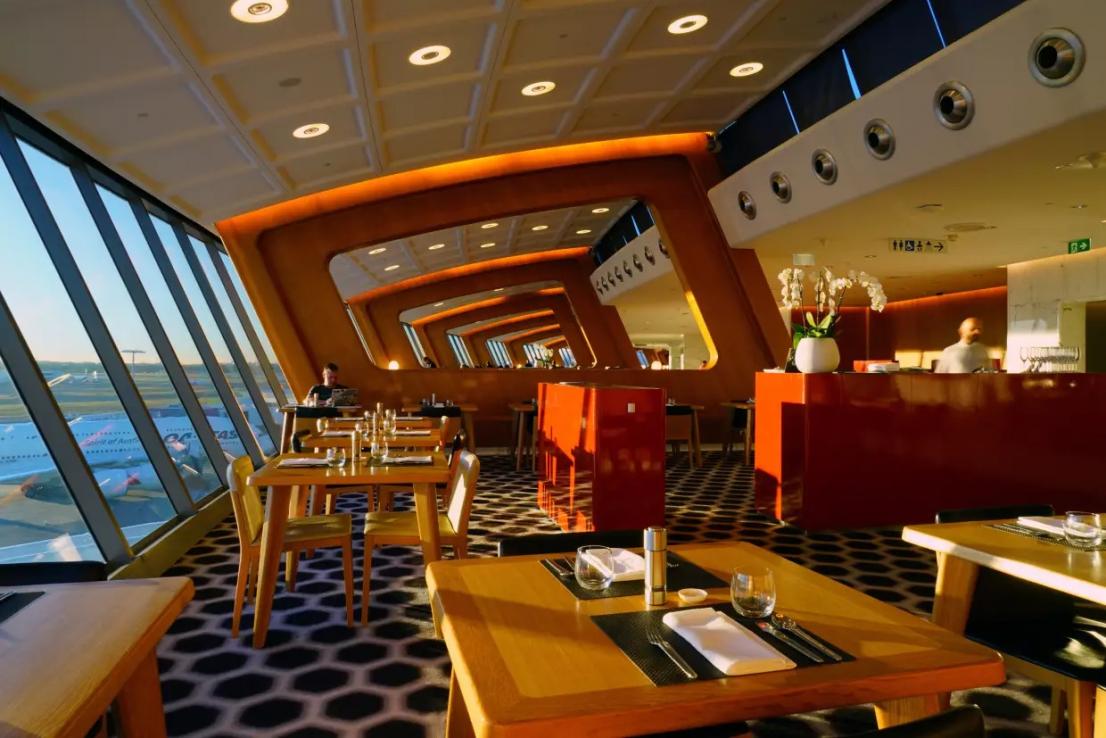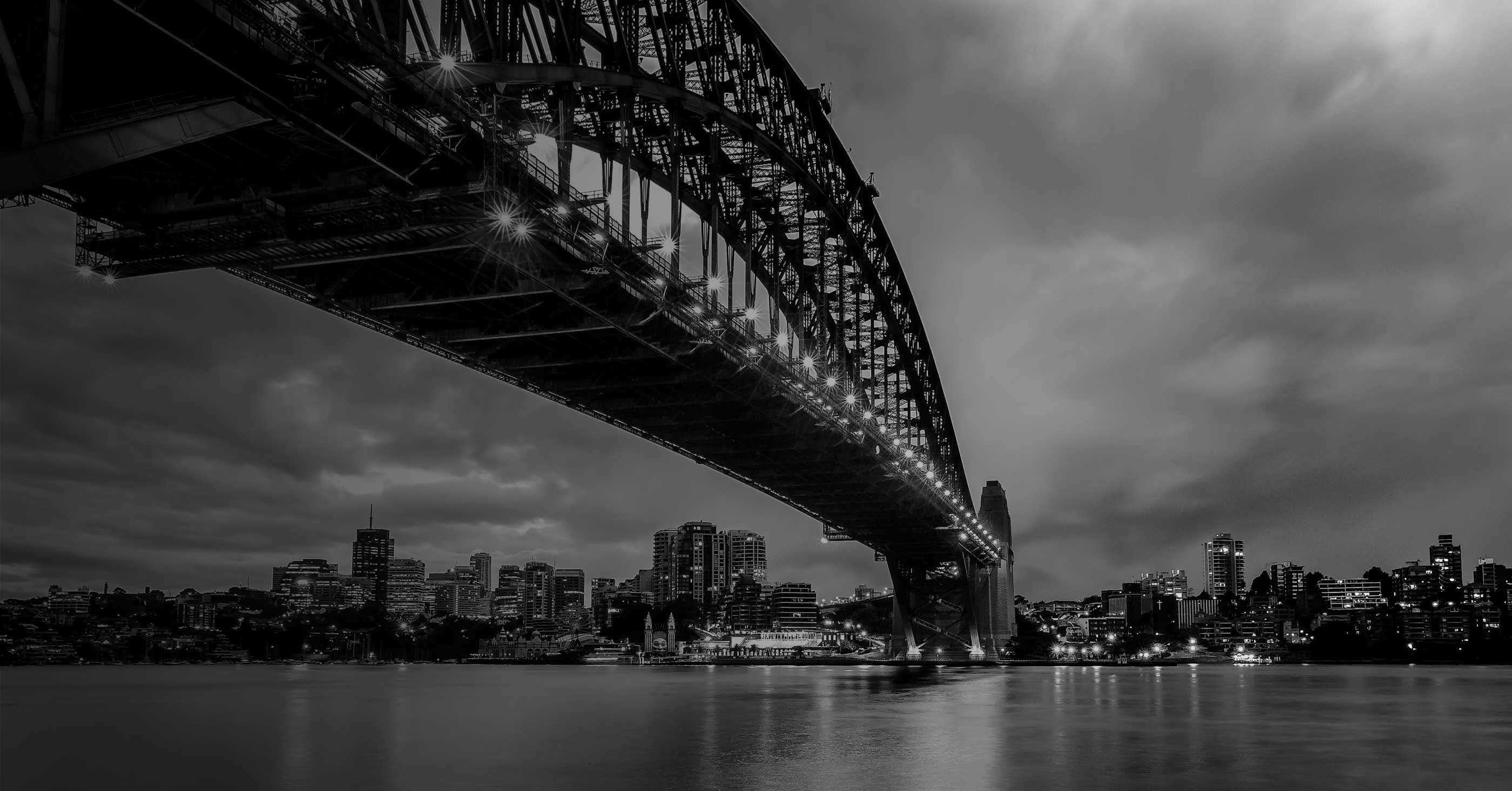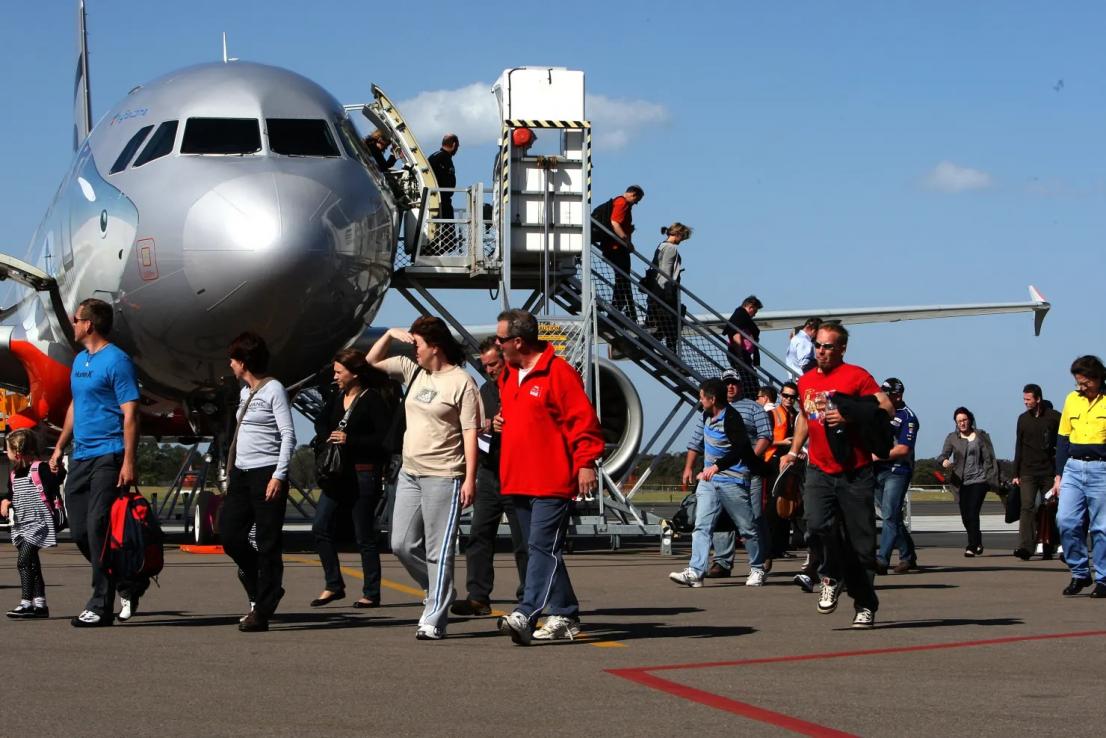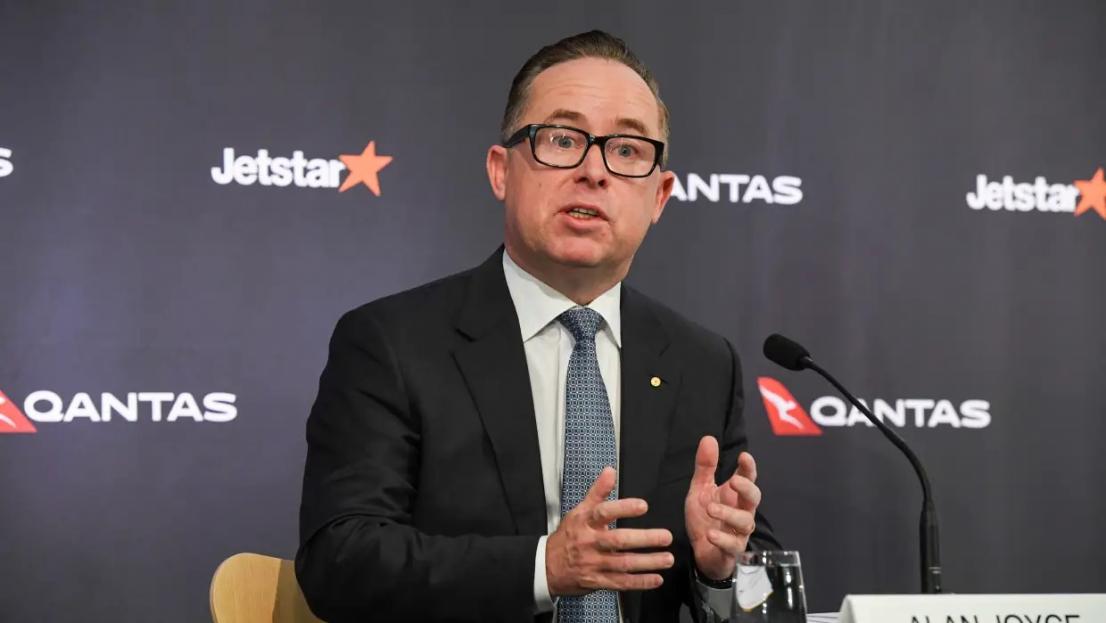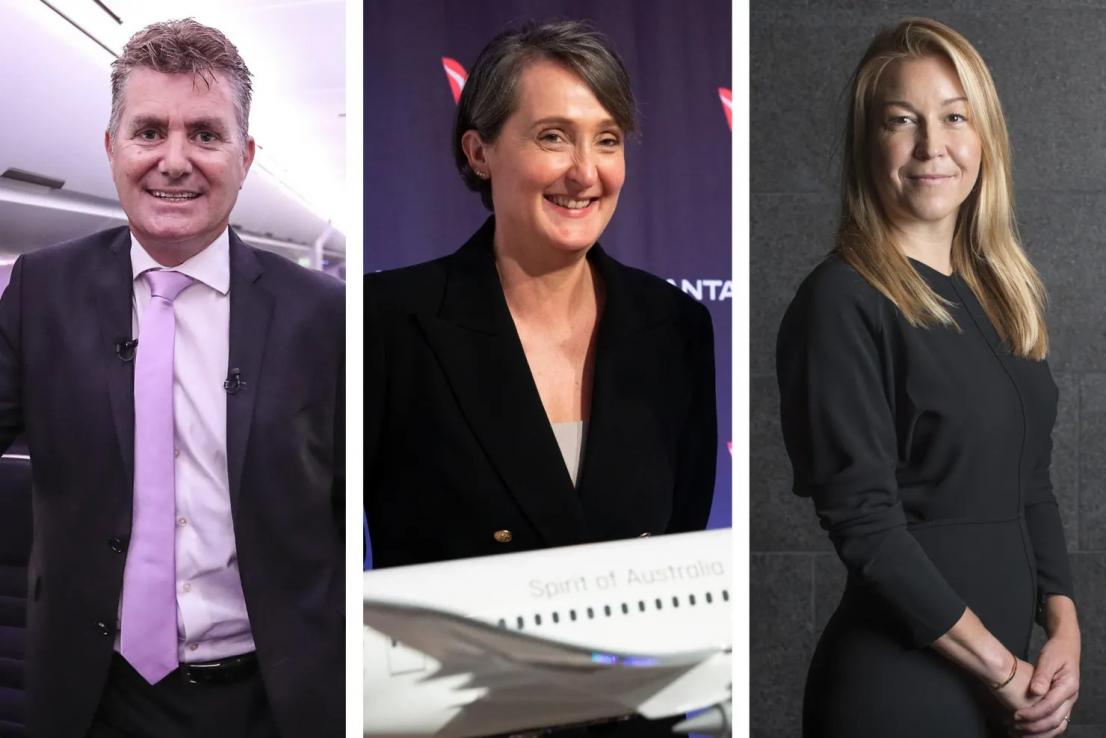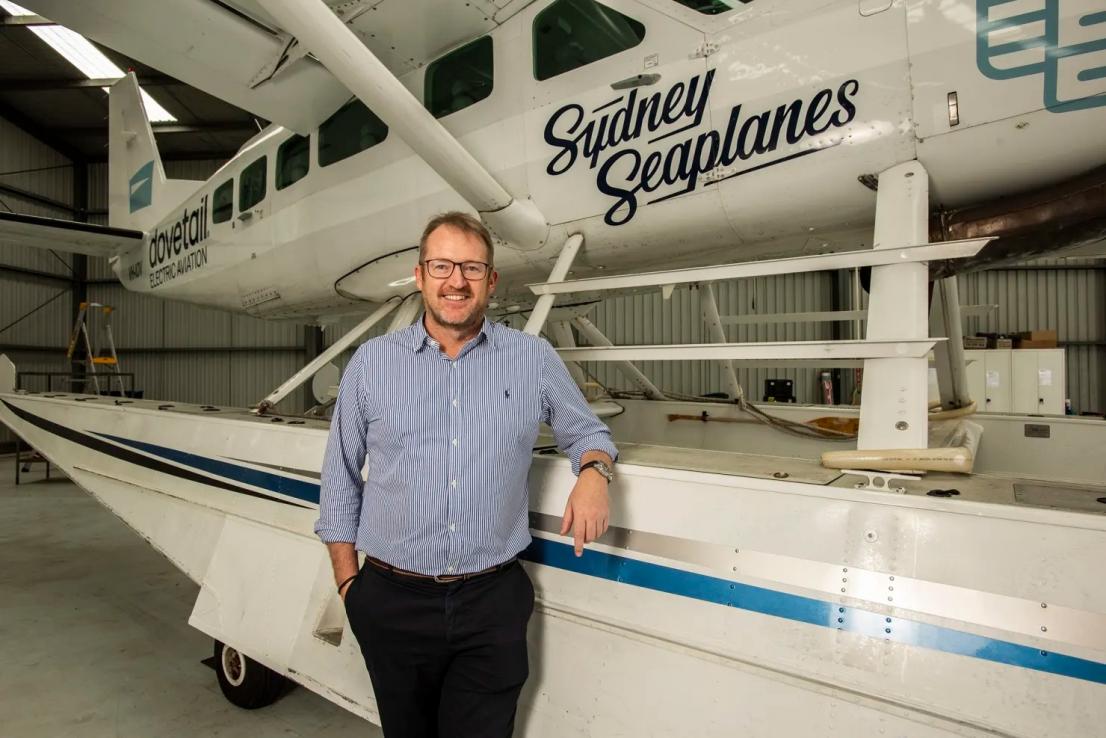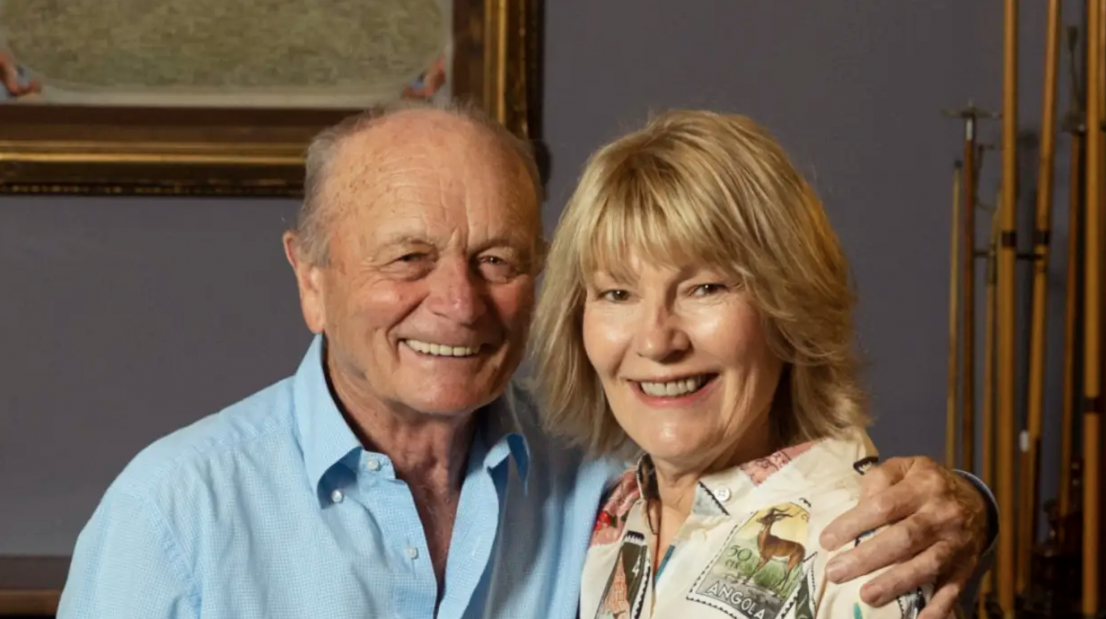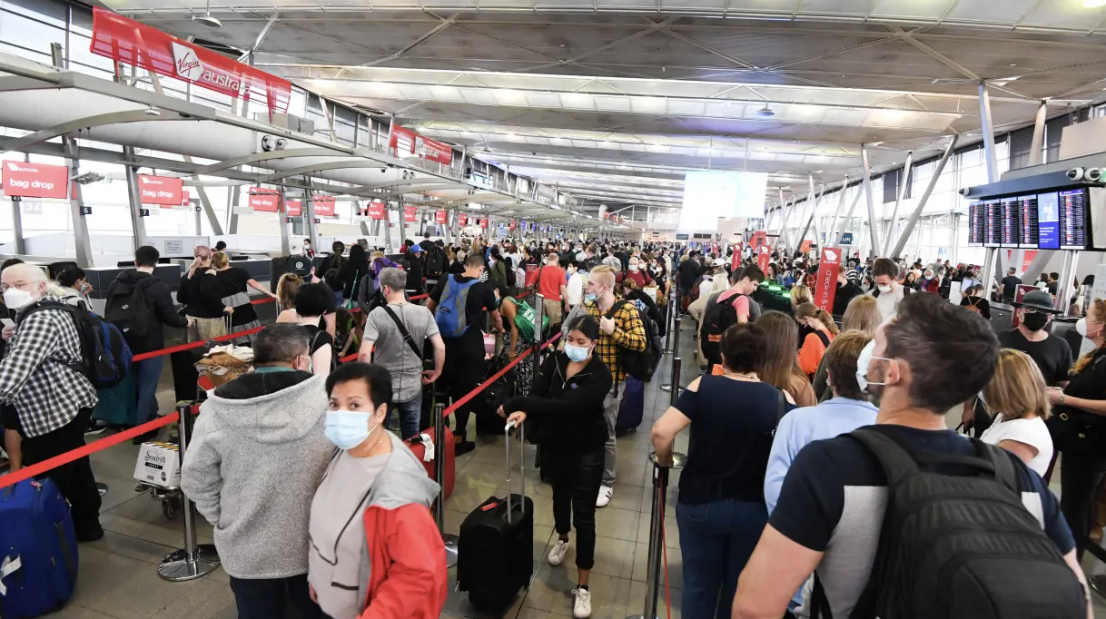
The Australian Financial Review asked airline and airport bosses to forecast Australia’s flight path. Here’s what they said:
Jayne Hrdlicka, Virgin Australia CEO
Will airfares go up or down? It is difficult to accurately predict when airfares will start to moderate, given the mix of factors driving them up at the moment. If fuel prices, consumer demand and inflationary pressures remain high, airfares will understandably be higher than historic levels. We are using every available aircraft in our fleet to meet high demand, and are taking delivery of 13 additional aircraft in 2023. Not all of this capacity will go to domestic markets, given our growing international routes, but we will be working hard to get supply and demand back in better balance. The additional domestic capacity will help us add seats on our most popular routes and also to start new routes.
Will travellers stop flying if airfares stay high? History tells us the “experience economy” does well during periods of economic softness. Consumers will continue to limit discretionary purchasing, but are likely to reduce spending on household items and buy less “stuff” than they are to remove travel and entertainment experiences. They may trade down on how much they spend, but the number of trips is unlikely to be significantly hit. This isn’t surprising, particularly in the context of a couple of years with very constrained travel during the pandemic. None of us will again take for granted freedom of movement, family and travel.
Will there be more flight chaos? We are making every effort to ensure travel these holidays is as seamless as possible, including operational changes. We have recruited an additional 800 frontline roles to support the surge in demand, reopened our fast-tracked security screening facilities in Brisbane, Melbourne and Sydney for eligible customers, adjusted our rostering tools, and optimised our schedule planning. We have already seen significant improvements to our on-time performance and completion rate since the July school holidays. Unless there are weather and air traffic control issues, our network is running with cancellation rates lower than pre-pandemic.
What are your most exciting new routes? We’re launching direct services to Vanuatu and Samoa in March, as well as a new direct service between the Gold Coast and Bali in the same month. But it is hard not to get really excited about the direct Cairns-Tokyo flights. These daily, year-round flights will operate through Tokyo’s most conveniently located airport, Haneda, from mid-year 2023 and add capacity for over 2000 passengers to fly between the two destinations every week.
If fuel prices, consumer demand and inflationary pressures remain high, airfares will understandably be higher than historic levels.
— Virgin CEO Jayne Hrdlicka
Where should travellers eat and drink? Our economy and business class on-board menus have been refreshed for summer with some lighter options. We have some fabulous restaurants in our home city of Brisbane for those planning a visit to the Sunshine State. I can’t go past Hellenika at the Calile or Gerard’s Bistro in Fortitude Valley.
Where will you be flying on holiday? My big adventure this year is to head to Tasmania for some serious hiking and wilderness adventure. There is no end to the amazing trekking opportunities in Tassie and I am really looking forward to a big dose of Mother Nature.
Geoff Culbert, Sydney Airport CEO
Will airfares go up or down? That will depend on airlines bringing on more capacity. On the domestic side we’ve started to see commentary about more capacity coming online late in the March quarter, but international capacity remains uncertain. There’s a lot of work to do to convince airlines to rebuild their networks to Sydney, and then to convince travellers to come here. Pre-COVID the proportion of Australians’ travel overseas to international visitors arriving was almost 50:50. Now it’s 65:35, so for every international visitor coming in, we have two Australian residents heading out. We’re now an unbalanced market and airlines like to see strong, two-way demand to ensure routes are sustainable. Getting more international capacity into the system needs to be the priority for 2023.
Will travellers stop flying if airfares stay high? Our experience is that when households are belt-tightening, the annual family trip is one of the last things to go. The yearly holiday to Bali or Fiji or the Sunshine Coast is pretty firmly entrenched.
Will there be more flight chaos? The terminals have been running smoothly for the past few months now, with 95 percent of passengers getting through security in less than 10 minutes. Like every Christmas, the airport will be busy, but we don’t expect it to be chaotic, with staffing levels the strongest we have seen since before the pandemic. But we’re not doing a victory lap yet – we’re completely focused on the operational side of the business and getting passengers on their way through Christmas and the New Year.
What are your most exciting new routes? Pre-COVID we had two airlines serving the Sydney to Seoul route and now we have five, with T’Way Air starting their new service on Christmas Eve. That puts South Korea alongside Bali and Fiji as the only destinations served by five airlines from Sydney. Australians’ interest in Korean culture really ramped up during the pandemic, whether it was bingeing on [Netflix series] Squid Games or Korean fried chicken. With plenty of capacity into Seoul in 2023, I think we will see a lot of people heading off to see this incredible place for themselves.
Where should travellers eat and drink? Now that travel is back we have some big plans for new offerings showcasing local providers, so watch this space. Inside tip – if you’re in the arrivals area of the international terminal you have to go to Ooosh. They’re not new, but they are the unofficial staff canteen. Their cheese pockets and great coffee got a lot of us through the pandemic.
Where will you be flying on holiday? Our daughter is studying the HSC next year so we’re likely to stay close to home. I just like standing in front of the departure screens at the airport and looking at all the places you can go – during COVID the screens were empty, and now they’re full. That feels good.
Lorie Argus, Melbourne Airport CEO
Will airfares go up or down? We think airfares are likely to fall in 2023, although it could be a while yet before supply catches up with demand. We are seeing some positive signs for travellers heading to some of our key holiday destinations, with five carriers now competing between Melbourne and Bali, and almost a million seats on sale for that route next year. The arrival of Thai AirAsia X on the Melbourne-Bangkok route means our capacity into the Thai capital is now up 15 per cent on pre-pandemic levels, and we have a record number of seats available into Vietnam and India. On the domestic front, we’re excited to be welcoming new low-cost carrier Bonza to Melbourne Airport next year. It has promised fares of around $50 for a one-hour flight, which is sure to generate a response from the other airlines on routes where they compete.
Will travellers stop flying if airfares stay high? We think there is still huge pent-up demand for travel and as capacity returns to the market airfares will start to fall, so there will be plenty of opportunities for people to get away on that much-needed holiday or family break.
Will there be more flight chaos? Airports and airlines have done a lot of work over the past 12 months to rebuild our workforce and return our operations to normal. We have hundreds of new staff now working at Melbourne Airport. The one area that’s still causing me concern is ground handling and in particular baggage services. It’s not where any of us want it to be, but the ground handling companies are recruiting and training new team members every week, so the situation should continue to improve.
What are your most exciting new routes? Qantas starting the world’s fourth-longest route between Melbourne and Dallas in December will be hard to beat, but as a native Canadian I’m very keen to reconnect Melbourne with that northern part of North America. I’m also excited by Bonza’s plans to directly connect Melbourne with smaller cities such as Bundaberg and Gladstone.
Where should travellers eat and drink? Most of the Melbourne Airport staff will tell you that I have a bit of a thing for Grill’d (Terminal 2 departures level), but I also love Shane Delia’s Biggie Smalls (Terminal 3 departures) for its kebabs and loaded fries, with a side of cool ’90s vibe!
Where will you be flying on holiday? I have plans to fly to China, Japan and North America for work, but my first holiday will be back to Canada to see my family.
Gert-Jan de Graaff, Brisbane Airport CEO
Will airfares go up or down? Airfares are currently elevated due to limited capacity and strong demand. As furloughed aircraft are returned to the skies and the labour pool is expanded, we expect airfares to come down later in 2023, which is great news for the travelling public.
Will travellers stop flying if airfares stay high? If you spend time in any terminal right now, you’ll realise Australians are eager to dust off their bucket lists and travel, following a couple of tough years at home. We expect this trend to continue into 2023, especially as increased supply lowers the cost of flights.
Will there be more flight chaos? As an industry we went from lockdown to full skies in a heartbeat just in time for the Easter holidays. Since then, capacity has been built up across all airports, airlines and service providers. Each holiday period has run more smoothly than previous peaks. We would expect this to continue in 2023.
What are your most exciting new routes? Boosting capacity to North America and Europe will continue to be a focus, while we work through the reopening of Asia throughout 2023, which is critical for Queensland’s visitor economy.
Where should travellers eat and drink? In our domestic terminal, The Common recently took out an award for its sleek design, Bound is getting great reviews for its coffee and The Aviary does a fantastic lamb and baked potatoes dish.
Where will you be flying on holiday? As we plan for the future look of Brisbane Airport it’s important to keep an eye on what the rest of the world is doing. I look forward to exploring airport terminals in Amsterdam, Atlanta, Chicago, Dallas, Dubai, Kobe, Kuala Lumpur, San Francisco, Singapore, Tel Aviv and Tokyo. It’s called research!
Stephanie Tully, Jetstar Group CEO
Will airfares go up or down? There’s no doubt that fares have come off the historic lows we have seen in recent years. The main drivers of higher fares are the same here and overseas: the high price of oil, strong demand for travel and capacity constraints. The big unknown next year is the price of oil, which is being impacted by ongoing global factors, including the war in Ukraine. The fuel bill for the Qantas Group will be the highest it’s ever been this year, and 25 per cent higher than pre-COVID, even though across Jetstar and Qantas we’re doing around 30 per cent less international flying. We remain committed to providing low fares and this year one in every three was sold was for under $100. Over the next six to 12 months, capacity will increase, with airlines bringing back aircraft, which will put downward pressure on fares. Between Jetstar and Qantas, we’ll have an average of one new aircraft arriving each month next year. We’re also putting on more Jetstar and Qantas sales over the summer and frequent flyer points planes.
Will travellers stop flying if airfares stay high? We are monitoring it closely, but we haven’t seen interest rates and inflation have an impact on travel demand yet. Australians continue to put a high priority on travel, prioritising experiences and holidays over other spending.
Will there be more flight chaos? We are confident that our customers won’t see the level of disruptions that they saw at Easter and the July school holidays. Our performance has improved markedly since then. Across Jetstar and Qantas, we’re making a number of changes to ensure we maintain this improved operational performance. This includes investing $200 million to have additional crew and aircraft on standby to give us more operational buffer if we get hit by extreme weather or sick leave spikes again; more spare parts to manage global supply chain challenges; and moving our customer teams around the network to where they are most needed.
What are your most exciting new routes? We’re really looking forward to seeing the first low fares direct service between Sydney and Rarotonga [Cook Islands] take off in time for next year’s winter school holidays, which is an amazing place for a beach holiday, and it’s been great to see our new flights to Seoul fill up fast.
Where should travellers eat and drink? When I am heading through Terminal 4 at Melbourne Airport I always swing by Brunetti’s. We recently launched our new summer in flight menu with snacks and drinks from producers based in the destinations we fly to. We are partnering with Byron Bay Brewery to offer locally brewed lager and working with well-known Adelaide-based family bakery, Vili’s Pies, to provide hot options.
Where will you be flying on holiday? The Sunshine Coast is always a popular holiday spot for our family and we are planning a trip to Japan to go skiing soon – anywhere with a beach or a snow-covered mountain, we are happy!
Stephen Byron, Canberra Airport CEO
Will airfares go up or down? I would say prices will come down on domestic airfares – airlines can’t keep charging double what they used to charge; consumers won’t put up with it for much longer. On international, Australia is re-engaging with the rest of the world, but it might take six months for the crazy international airfares to come back down. We expect direct international services to return to Canberra in 2023, and, ultimately, this will lower fares.
Will travellers stop flying if airfares stay high? There is still much pent-up demand for international travel, and despite the rising cost of living and high inflation, discretionary spending is still high. Canberrans are ready to make up for lost time and take that long awaiting trip overseas.
Will there be more flight chaos? Chaos isn’t a thing in our airport – we rarely experience delays in security or check-in and baggage at the airport. The level of airline cancellations at Canberra is back down to pre-COVID levels and they are doing a good job at minimising any delays.
What are your most exciting new routes? Bringing back a New Zealand route by September 2023 is an exciting opportunity for Canberra. It also brings the opportunity to hub through New Zealand to American ports.
Where should travellers eat and drink? You can eat like a local in our airport – we serve a range of delicious local Canberra food and beverages. From iconic Capital Brewing Co beers and burgers at Airport Taproom to the famous and delicious Ona coffee.
Where will you be flying on holiday? When Singapore Airlines recommence services to Canberra, I will be on the first flight.
Kate Holsgrove, Perth Airport acting CEO
Will airfares go up or down? Airline operations were significantly impacted during the pandemic and it has taken some time to reinstate aircraft, crew and supporting staff. There is less seat capacity available this peak holiday season and this has led to a rise in airfares. At some point in 2023, though, pent-up demand will soften and airline services will be restored to optimal levels. We are also expecting new airline services to be introduced in Perth, adding more available seats for sale. Overall, we expect the cost of airfares will go down as airline competition hots up.
Will travellers stop flying if airfares stay high? If you’re reading this and it feels like most people you know are away on holiday, you’d probably be right. People are no longer prepared to wait to tick things off their bucket list, and travel remains a top aspiration for those looking to make up for lost time. While the price of airfares has risen sharply, people are still planning to take a well-deserved break, reconnect with family and friends, or explore somewhere new, and business travel remains essential for face-to-face meetings. That said, Australian travellers, who are already dealing with home loan interest rate increases and increased cost of living pressures, won’t accept continued artificially high airfares indefinitely. We expect more capacity to be added into the market in the new year, which will help to normalise the cost of airfares.
Will there be more flight chaos? Domestic airlines have struggled with cancellations and delays driven by COVID-related factors, and the aviation sector has been working together to overcome the issues. Our peak holiday season over December and January will be a big challenge, but our team has been working with airlines to ensure we’ve done everything possible to get families away on time. It may not be perfect, but we hope travellers understand that everyone is doing their best.
What are your most exciting new routes? Philippine Airlines will start a new, non-stop service between Perth and Manila in March. There are many high-priority markets such as India, Japan, Indonesia and Vietnam that we are focused on. We also look forward to the China market resuming travel when the time is right.
Travel remains a top aspiration for those looking to make up for lost time.
— Kate Holsgrove, Perth Airport acting CEO
Where should travellers eat and drink? The Aspire Lounge in T1 International overlooking our airfield with views back to the Perth CBD. We’ve tried to create a real sense of place so that international travellers get a taste of Western Australia.
Where will you be flying on holiday? High on my list is a holiday to Mauritius. With non-stop flights from Perth to this tropical island paradise, it offers the perfect blend of adventure and relaxing – and makes for a pretty amazing stop-over en-route to South Africa or France too.
Brenton Cox, Adelaide Airport managing director
Will airfares go up or down? In the absence of unexpected shocks, airfares will start to come down during 2023. Airlines are addressing imbalances in supply and demand which should start to normalise the cost of flights. In the meantime, keep booking early where you can.
Will travellers stop flying if airfares stay high? There is still significant pent-up demand for travel, and we expect that to continue into the New Year. We believe that people will prioritise expenditure on the kind of experiences they have been starved of over the past few years.
Will there be more flight chaos? Airlines and airports have done a significant amount of work to repair service capability. We’re conscious of the challenges ahead, particularly around the transition to enhanced security equipment. We’ve added security screening capacity and have employed 35 per cent more security staff since July 2022. There is more work to do and this will be made more challenging over 2023 and 2024 as the industry deploys new security equipment and processes in a live operating environment.
What are your most exciting new routes? We are focused on repairing the network with our existing customers. In 2023 we are hoping to see border restriction relief to and from China, and we are working towards the return of China Southern and Cathay. The return of Emirates is firmly on the radar over the next few years.
Where should travellers eat and drink? Our new retail precinct has a strong focus on local SA flavours and brands, from 100 Miles – which sources all of its products from within 100 miles of the airport – through to Southern Providore stocking fantastic SA brands like Beerenberg, Barossa Fine Foods and a big range of products from Kangaroo Island. And of course, the new Penfolds Bar and Kitchen is proving a hit. There wouldn’t be many airports in the world where you sip a glass of Grange while you wait by your gate!
Where will you be flying on holiday? It’s hard to leave Adelaide at the moment with all of the festivals and events in the pipeline. We had an incredible family holiday in Fiji last year thanks to Fiji Airways and plan to fly with Singapore Airlines into South-East Asia this year – if we can find a gap between events in Adelaide.
